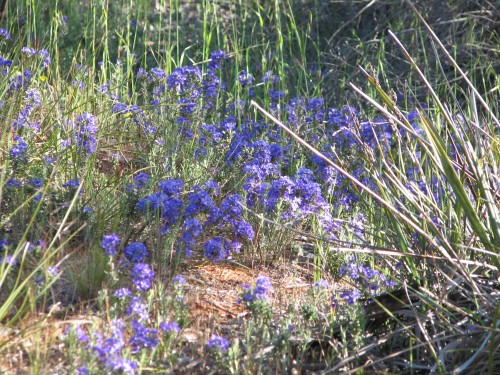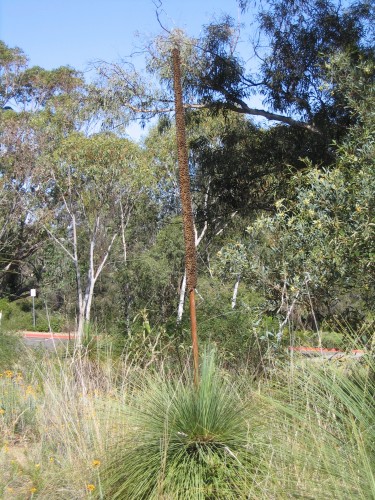Olearia passerinoides
Olearia passerinoides is a mallee daisy and is quite a large bush with bright green leaves, different to many mallee daisies which often have grey green leaves. Although this is a shrub, to me it behaves as a perennial shrub, in that new growth appears along the older wood.
The bush has a tendency to become scruffy, with the leaves higher up the stems and the flowers also high. If it was cut back to the lower growths, it would have dense foliage and be a more compact plant, and I suspect the flowering would also be quite spectacular.
As usual, I promise myself that I will do this, and yet another season goes buy. Mine have just finished flowering, so out with the secateurs tomorrow, while I think of it.
Olearia passerinoides is drought, lime and frost tolerant. It has clusters of small white daisies and grows to 2-3m tall by about 1.5-2m wide if left to its own devices. Pruning will keep it to a more compact size.
Propagating Australian Native Plants
There has been relief from the heatwaves and I have been potting on struck cuttings as fast as I could. I wanted them in their pots and in the hot house before the next burst of heat. New roots dry out so quickly when planting on. Sometimes I have taken potting mix, seedlings, pots and boxes for the plants inside to work, but the hassle is still finding somewhere to store the newly potted seedlings. Not to mention the mess to clean up and the lugging of boxes of plants to the hot house.
The hot house has allowed me to keep the survival rate very high as the humidity keeps a blanket of moisture around the soft leaves. The next step is gradual hardening off.
I have a number of plants I am looking forward to planting out next month, taking advantage of the warm ground to get them growing well before the frosts slow things down. Unfortunately it means bucketing extra drinks to the plants until the rains in late autumn, but it will be worth it to have them well established before next summer.
I want to do a survey around town to see what has survived this summer and under what conditions, drippers, hand watering or none at all.
Dampiera rosmarinifolia
Eremophilas (Emu Bush) in Medicine
The following is an extract from an article on the ABC Website concerning the research that has been going on with Eremophilas. These are hardy plants, with attractive flowers which are loved by Honeyeaters.
More on Eremophilas can be seen here. Also see the category Eremophilas.
Australian native plants are being used to develop new antibacterial agents for coating biomedical implants (Source: Hans Griesser)
An extract from a flowering desert plant, used as traditional medicine by Indigenous Australians, could one day be used to coat hip transplants and other biomedical devices, say researchers.
Professor Hans Griesser and colleagues are presenting their work this week at a biomaterials conference at the University of New South Wales in Sydney.
“We can learn so much from nature and traditional knowledge,” says Griesser, a materials scientist from the University of South Australia.
He says Aboriginal people use leaves of Eremophila plants, which grow in Australia’s desert areas, to make ointments for skin abrasions and gargles for throat infections.
More of the article can be read here.
Xanthorrhoea glauca ssp angustifolia (Grass Tree)
I found this plant in Canberra Botanic gardens in the bush garden with other grasses and daisies. I assume that it is native to the area around Canberra. I could not find ant direct information about the plant. Most of the time I scrabbled around the base of plants in the garden looking for the aluminium tag attached to the plant to read what the species was. Unfortunately, I forgot to check other plants in the area in case there was further information.
Judging by the type of soil and location, I suggest that this plant needs good drainage. It is obviously frost hardy as it was in an exposed situation. There was a saying amongst the Australian Plant Society members that if a plant grew in Canberra, it would survive any frost that formed in South Australia.


